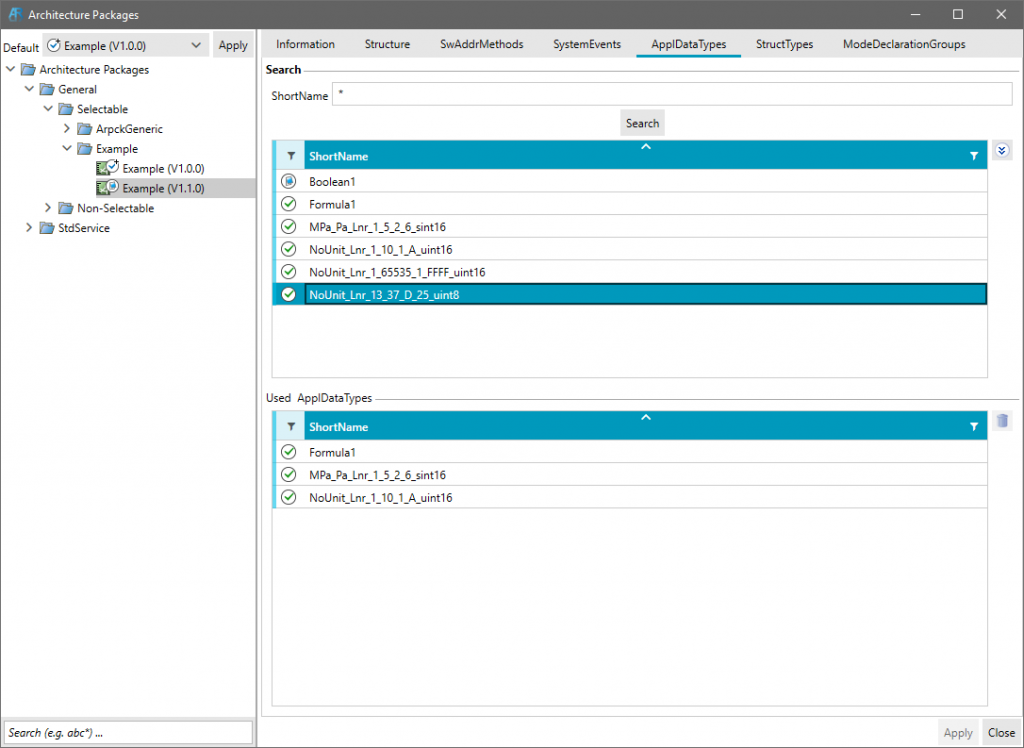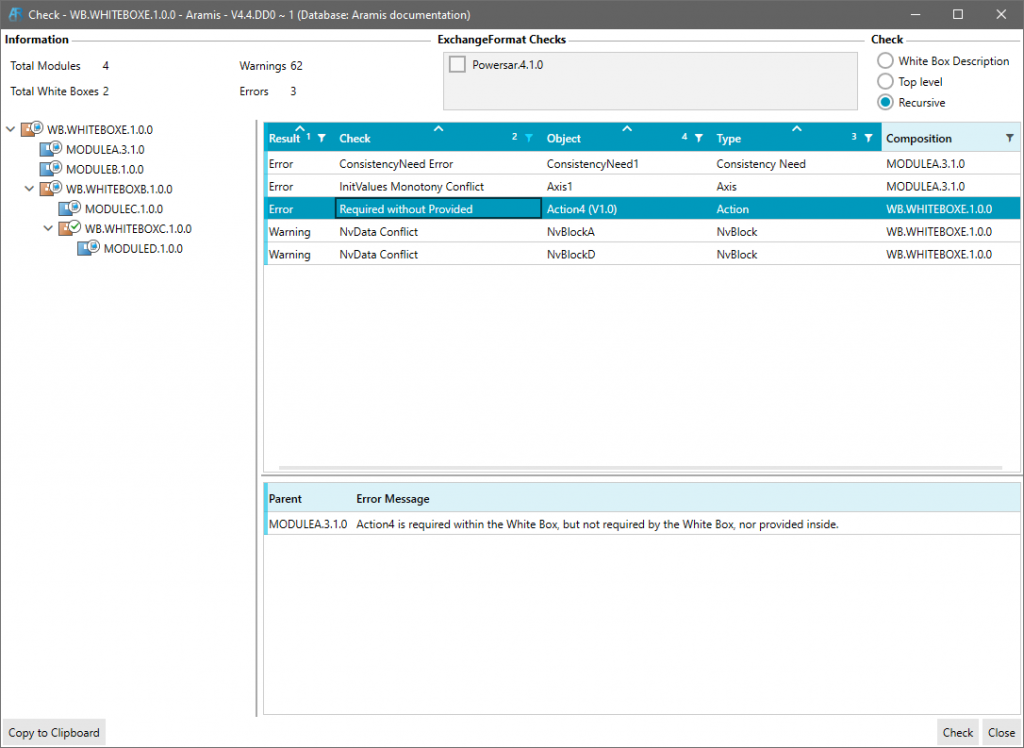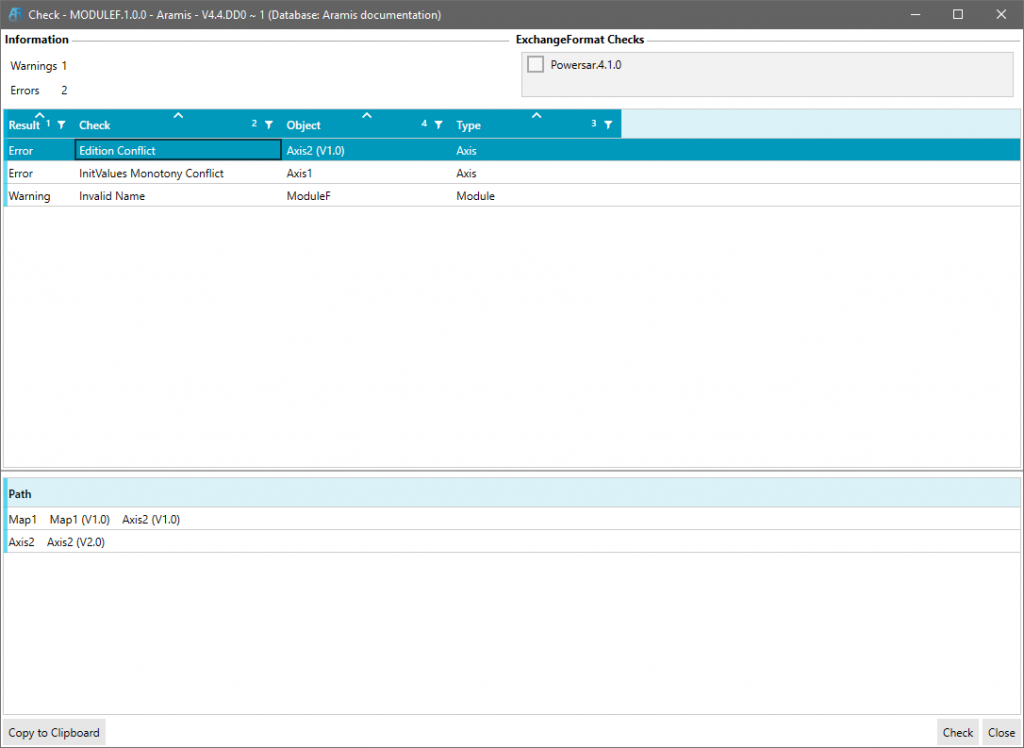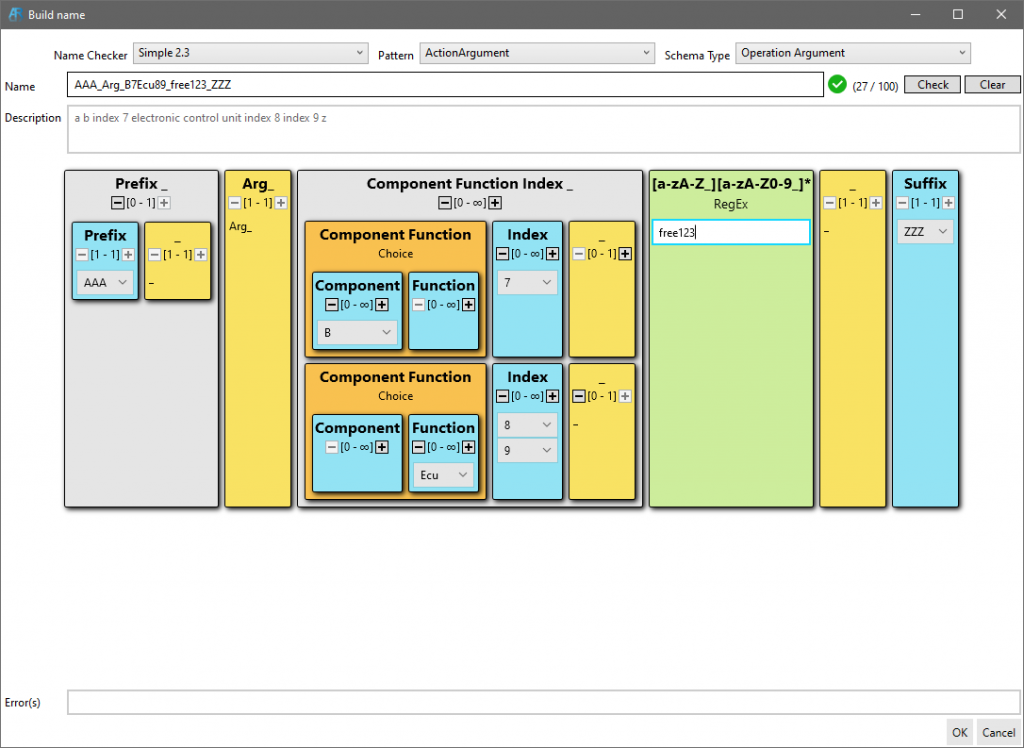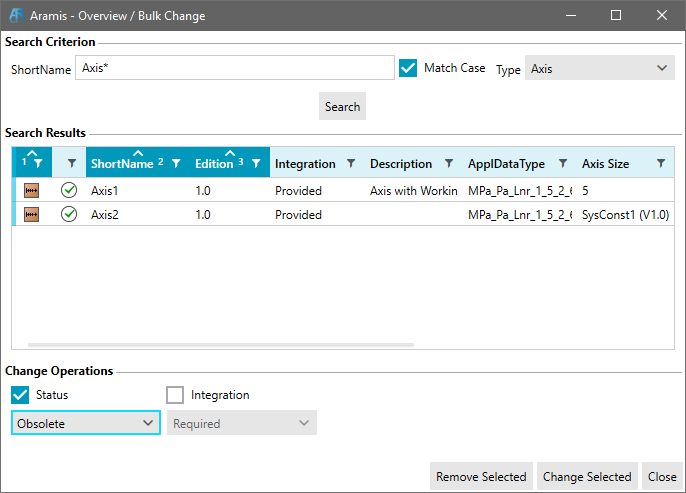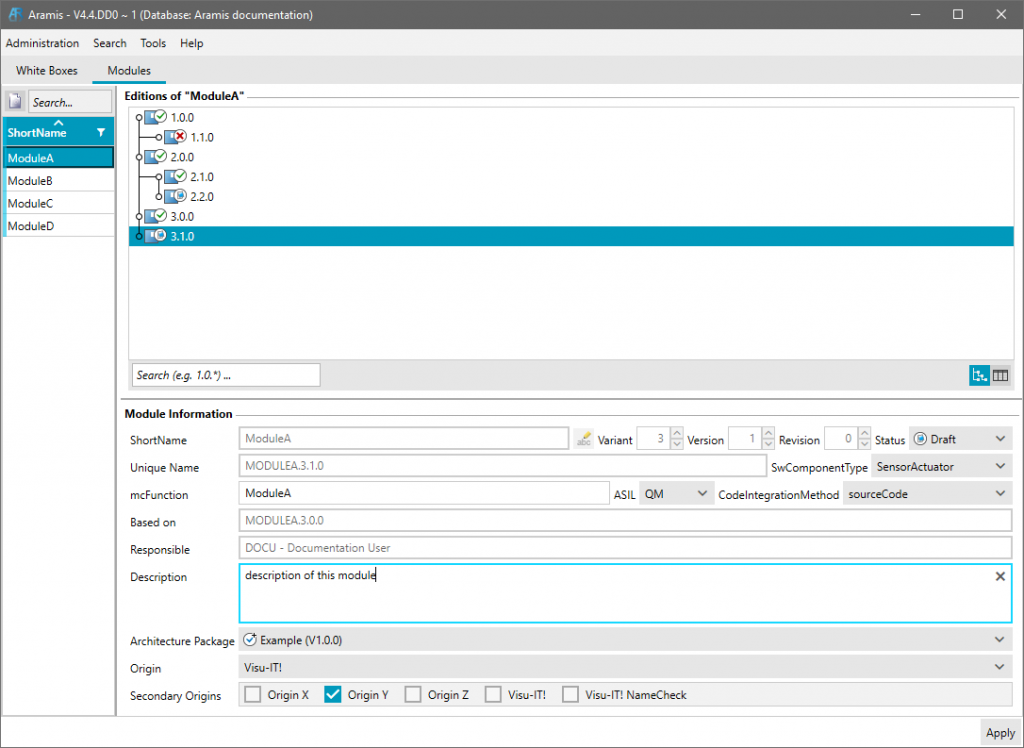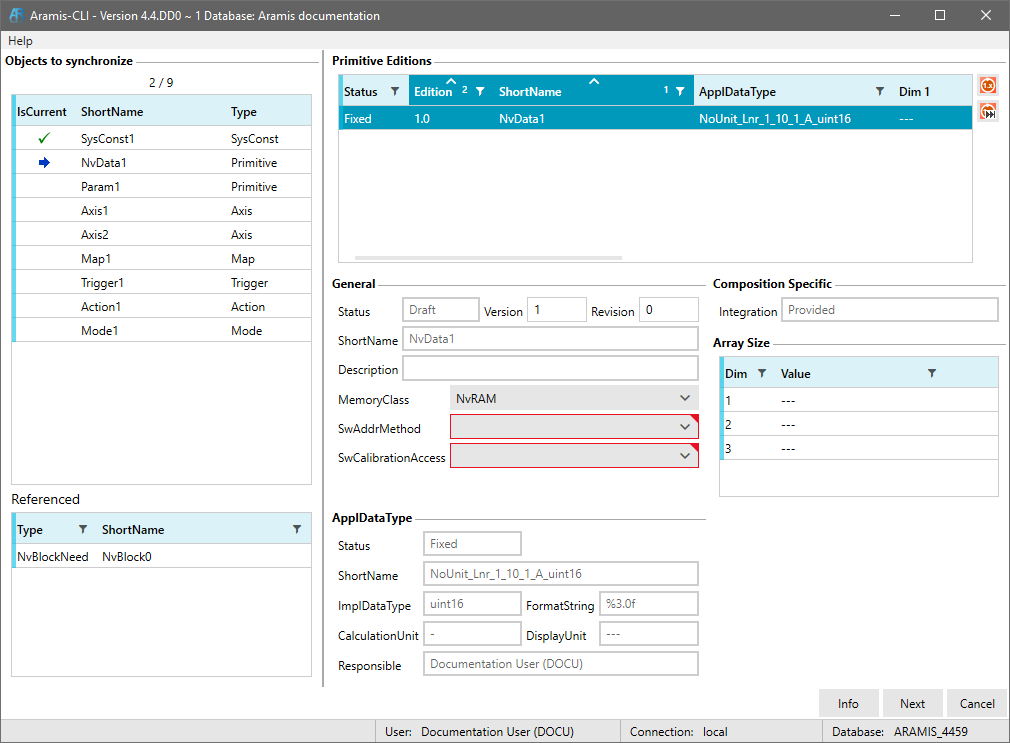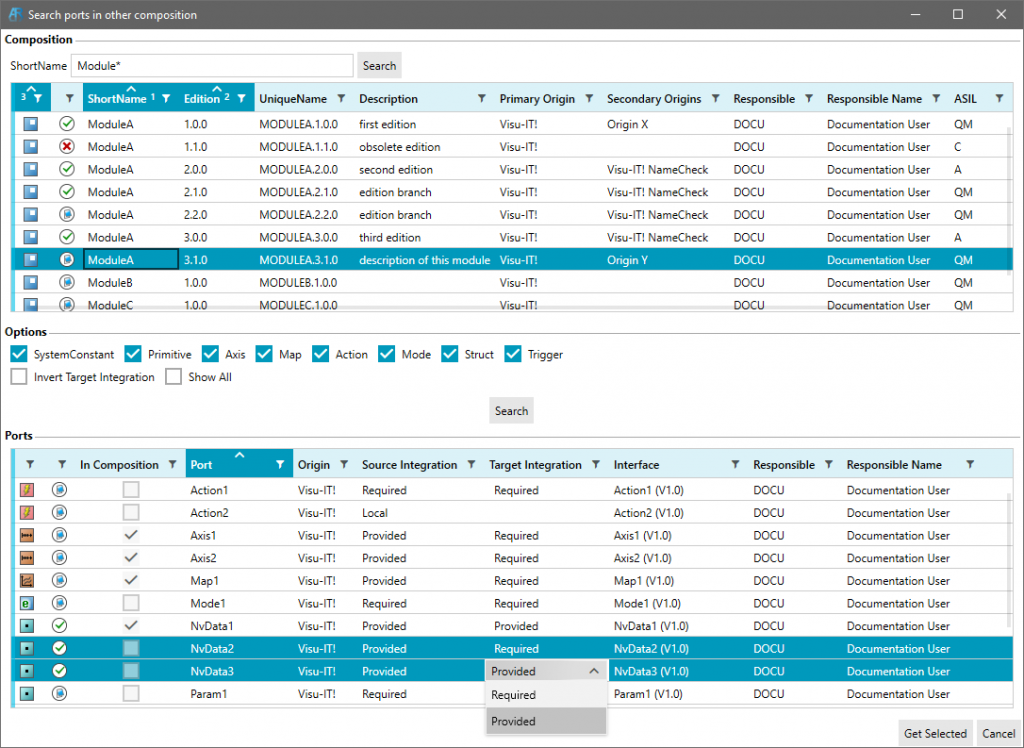Introduction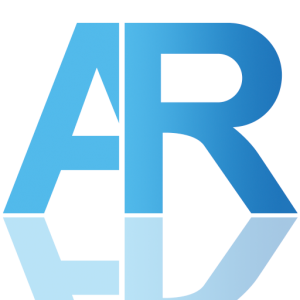
Aramis is a powerful tool helping developers with architecture, design and implementation of software on ECUs in an AUTOSAR environment. Engineers in the automotive industry can model AUTOSAR objects (stored in a central database) and exchange them (via ARXML files) by using Aramis. Aramis has a similar scope as ADD but is focused on the AUTOSAR methodology.
Advantages
- Aramis provides convenient abstractions for complex AUTOSAR concepts. This enables end users to efficiently manage AUTOSAR objects on a high level without the need to delve into the details of ARXML. Aramis is not just an XML editor.
- Aramis is backed by a 3-tier architecture and is optimized for global usage. This allows simultaneous usage by teams distributed across the world.
- Aramis is based on a central database (single source). This enables reuse of objects in a multi-user environment across multiple projects.
- Aramis provides extensive consistency checks on the data. Feedback at an early stage reduces further costs in the development process.
- Users can control Aramis via a convenient graphical user interface. Furthermore, build steps and other tools can invoke Aramis via a command line interface (CLI).
- Upon request, Aramis can be easily adapted to customer-specific use cases.
Main Features
Architecture
- Define architecture with the help of “white boxes” (hierarchical structures of SW component types) to faciliate reuse and encapsulation of software components.
- Guidance of the user by defining “architecture packages”. They reduce the predefined objects available in a composition SW component type. Moreover, they allow to mark certain objects (e.g. application data types) as recommended.
- Visualization of software architecture, data flow and data access
Modelling
- Types of objects which can be modelled in Aramis:
 Composition SW component types
Composition SW component types- Sender receiver interfaces / parameter interfaces / NV data interfaces:

 Maps
Maps
 Axes
Axes
 Primitives
Primitives
 Structs
Structs


 Client server interfaces
Client server interfaces Mode switch interfaces
Mode switch interfaces Trigger interfaces
Trigger interfaces System constants
System constants


 Runnable entities
Runnable entities- SWC service dependencies with service needs, e.g.:
 Diagnostic event needs
Diagnostic event needs OBD service needs
OBD service needs Function inhibition needs
Function inhibition needs Supervised entity needs
Supervised entity needs NV block needs
NV block needs
 Consistency needs (multi-core)
Consistency needs (multi-core) Sequence needs (VFB timing)
Sequence needs (VFB timing) Memory sections
Memory sections NV blocks
NV blocks- Application data types
- Implementation data types
- Units
- …
- Control automotive safety integrity level (ASIL) of composition SW components.
- It is possible to store the origin of objects (e.g. customer or department).
- Management of non-volatile data (NV data interfaces, NV blocks and NV block needs)
- Calibration of data (e.g. define initial values)
- Sequencing of runnable entities
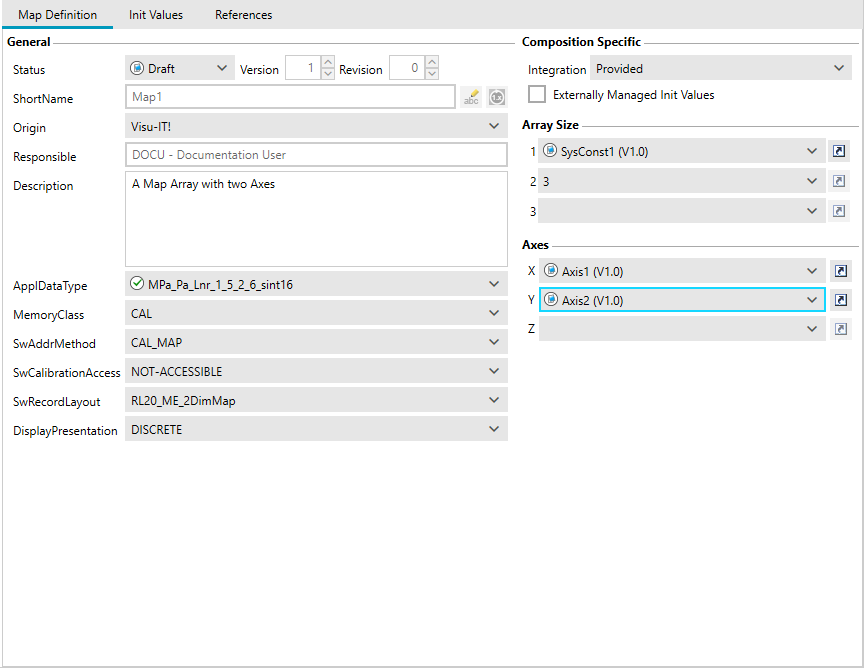
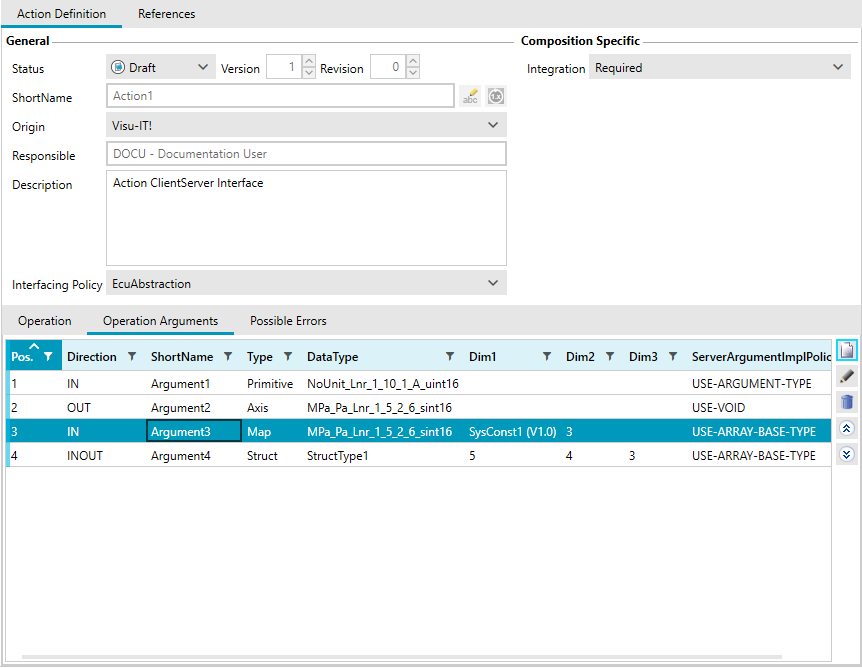
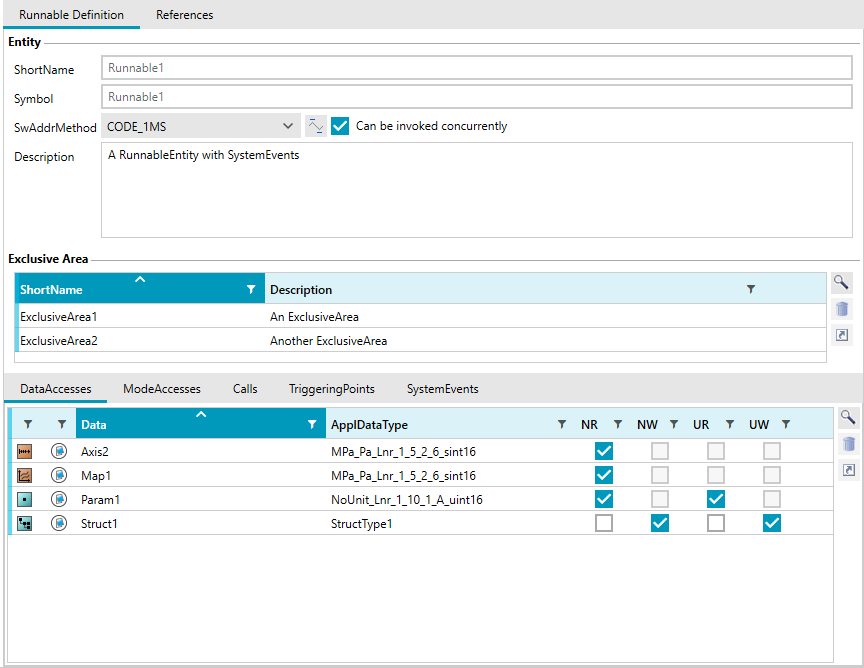
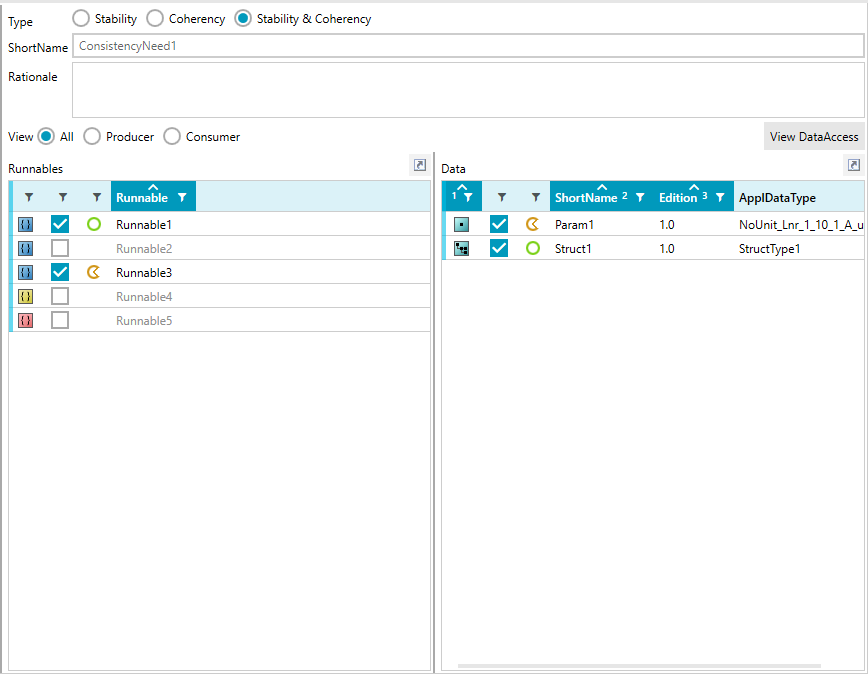

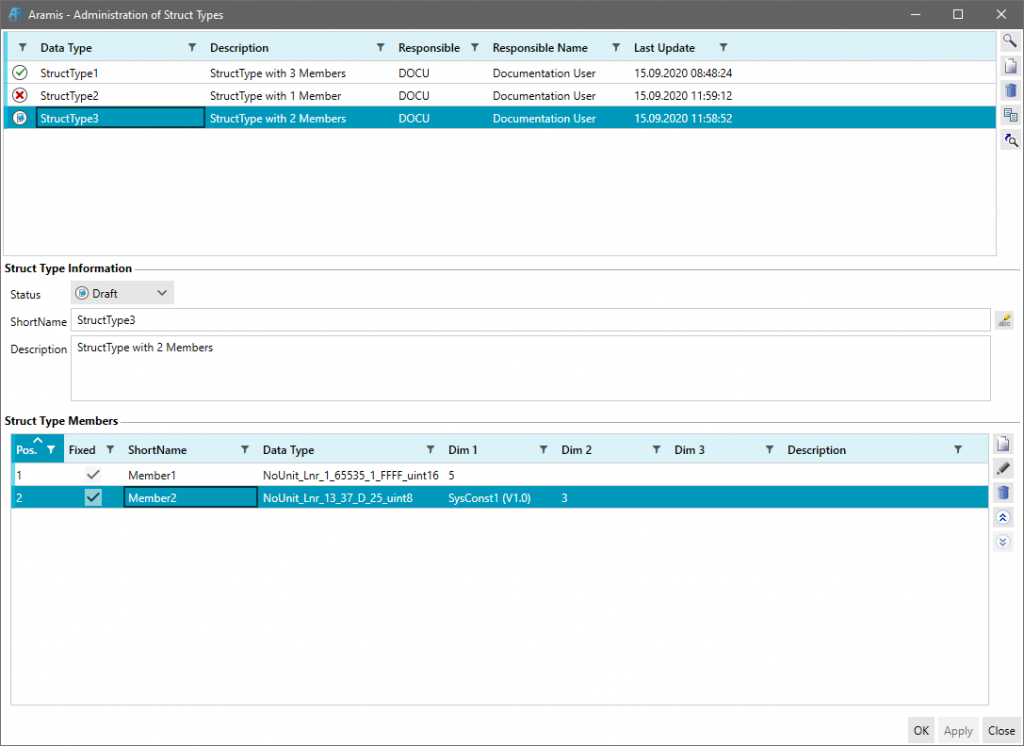
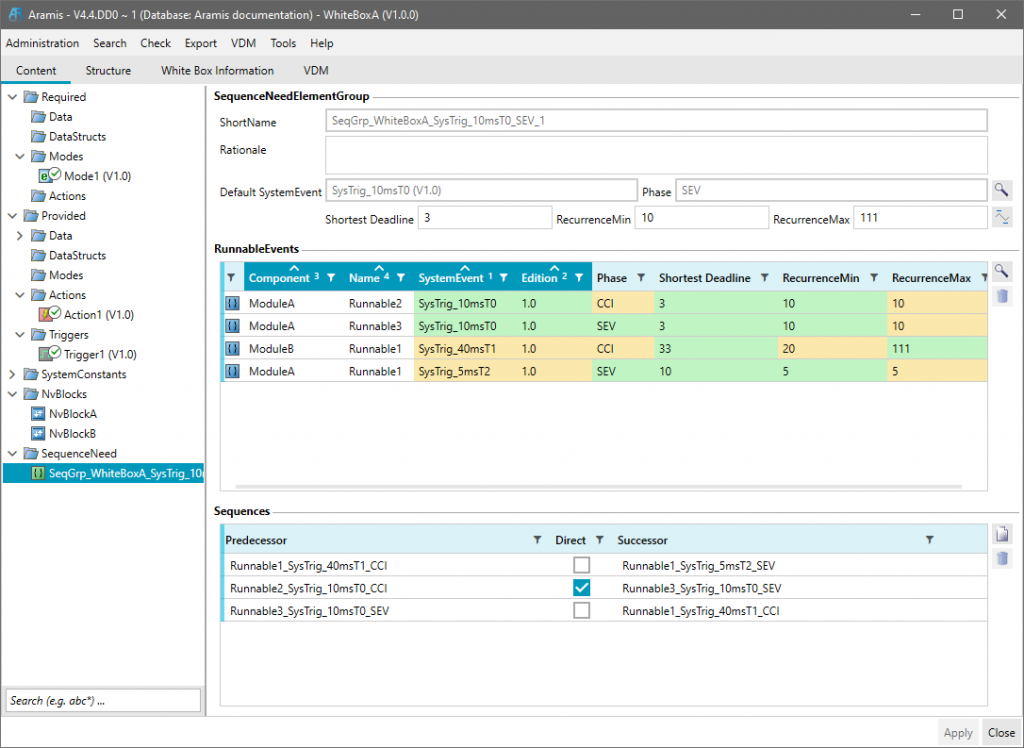
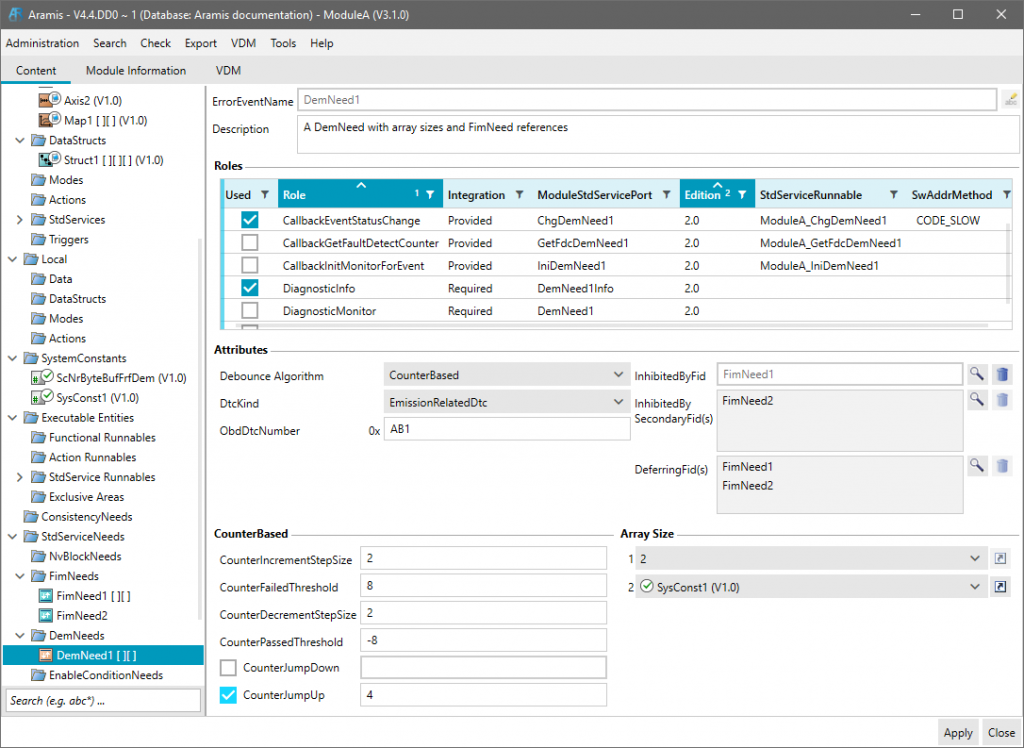
Checks & Versioning
- Extensive consistency checks and validations on multiple levels, e.g. individual interfaces, single SW component types as well as their hierarchic relationships
- Aramis features a version management of data. For example, it is possible to create new versions of existing objects taking over the previous attributes.
- Management of user rights and object lifecycle (status, responsible user). These mechanisms also control which objects can be edited and reused by which users.
- Customizable checks of naming conventions (naming rules can be taken from configuration files or from custom databases)
SWCs & ARXML
- Define SW component types and their contents
- Export of ARXML files
- Import of ARXML files and synchronization with existing SW component types in the Aramis database. The synchronization includes a dedicated user interface to interactively solve data conflicts which haven’t already been corrected automatically.
- Automatic generation of elaborate AUTOSAR structures including
- Complex data types, e.g. arrays of application data types and their corresponding implementation data types
- Assembly connectors and delegation connectors
- NV block component types
- Sequence needs (VFB timing)
- Atomic SW component types like application, parameter, complex device driver, etc.
- Standard service client server interfaces and runnable entities
- Compu methods
Further Properties
- The client and the server components of Aramis can be installed via copy deployment. The server component can alternatively be installed as Windows service (recommended).
- Runs without pre-installed database driver software
- Doesn’t require additional application server software
- Supports multiple databases environments (e.g. productive, testing, etc.) which can be configured centrally
- Aramis includes a command-line tool which can evaluate formulas written in AUTOSAR formula language.
Contact
If you are interested in Aramis or if you need more information about the tool, please contact us.


